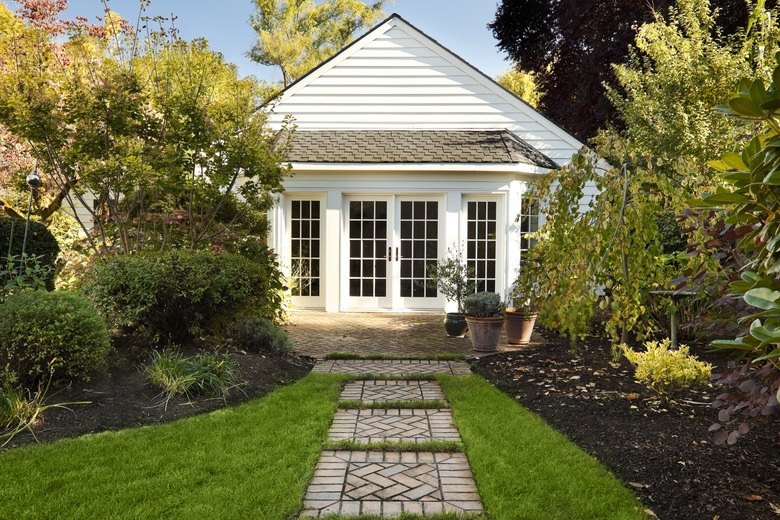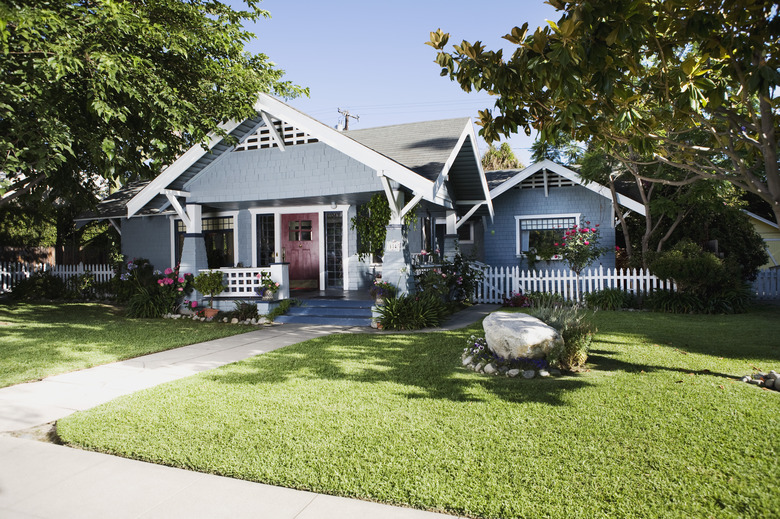When Is The Best Time To Dethatch Your Lawn?
We may receive a commission on purchases made from links.
Thatch is a layer of living stems, dead grass, roots, and crowns above the soil surface but below the green grass blades. It's important to dethatch your lawn when you develop excessive thatch, as it can cause your lawn to become unhealthy by depriving the roots of water, air circulation, and nutrients while at the same time making the grass more susceptible to pests and diseases.
But to make things more complicated, dethatching at the wrong time can actually harm your lawn more than it helps. The proper time to remove thatch buildup will depend mostly on what type of grass you have, as it cannot be done during the lawn's dormant season.
Here's what you need to know about dethatching grass — including, most importantly, when exactly you need to get this task done.
When to Dethatch a Lawn
When to Dethatch a Lawn
Just like aerating or planting grass seed, the best time for dethatching is during the active growth period for your grass type. That's because dethatching actually damages your lawn, just like aeration, and it's important that your grass is in its active growth stage so it can repair the damage effectively. This means you should dethatch your yard based on whether you have cool-season or warm-season grass.
Cool-season grasses, also called Northern grasses, should be dethatched in late summer to early fall. These grasses include:
- Kentucky bluegrass
- Bentgrass
- Perennial ryegrass
- Fine fescue
- Tall fescue
- Creeping fescue
- Rough bluegrass
- Annual ryegrass
Warm-season grasses, also called Southern grasses, should be dethatched after the grass has completed its early spring renewal stage and has started its peak growth phase in late spring or early summer. These grasses include:
- Bermudagrass
- Zoysia
- Centipede grass
- St. Augustine grass
- Carpetgrass
Even if you are careful to never dethatch during the grass's dormant season, it's important to also take into account the health of your grass. Never dethatch when your lawn is already stressed, going through a drought, or otherwise weak, as this can make recovery particularly difficult. Also, be sure not to dethatch when the soil is wet since this can harm the structure of the underlying soil and can remove underground roots that should remain in place. Remember that dethatching involves stripping out not just dead plant matter but also grass roots and stems, so only dethatch when it is actually necessary and at a time when your yard can handle it.
Not All Grass Needs Dethatching
Not All Grass Needs Dethatching
Just because you notice a small amount of thatch doesn't mean you need to start acting immediately. In fact, not only do most lawns have at least a small layer of thatch but it can actually benefit your yard in the same way that mulch does by insulating the soil from extreme temperatures and keeping moisture locked in. Thatch also gives grass a springy feeling that makes lawns more comfortable to walk on. It's only when you develop a layer of particularly thick thatch that you need to be concerned.
When you develop a thick layer of thatch, it can serve as a barrier that will prevent water, nutrients, and air from reaching the roots and soil below. It can also make it easier for pests and diseases to take hold by giving them a protective place to hide. To make matters worse, thatch can make some fungicides and insecticides less effective because they won't be able to reach the soil or roots of the grass. If the problem goes on long enough, the roots will start to grow into the thatch to access more nutrients and water, not only making the thatch thicker but also making the roots more susceptible to disease, stress, and drought.
What Causes Thatch?
What Causes Thatch?
Sadly, the causes of thatch might be self-imposed — by overwatering, overfertilizing, or mowing improperly. Watering too much will result in shallow root growth, while proper watering will encourage the roots to grow deeply. Overfertilizing can result in thick roots at the soil level, and it can also change the pH level of the soil, potentially killing off beneficial organisms in the soil that eat dead plant matter.
Because thatch often contains organic matter such as dead grass, many people assume that leaving grass clippings on the lawn after using a mulching lawn mower will cause thatch. In actuality, this can help you maintain a healthy lawn because small clippings should break down easily and nourish the soil. Waiting until your grass is too long can result in larger clippings that take too long to break down, which is why you should never cut more than 1/3 of the grass length at once. Similarly, if you already have too much thatch, raking up clippings is a good idea so they do not add to the thatch.
It's also worth mentioning that some grasses are naturally prone to thatching problems, so you should pay particular attention to the thickness of your thatch layer if you grow Kentucky bluegrass, creeping bentgrass, creeping red fescue, Bermudagrass, or zoysia. On the other hand, you won't experience as many thatch issues if you have tall fescue or perennial ryegrass.
Signs That It’s Time to Dethatch
Signs That It's Time to Dethatch
So, you know generally when a good time to dethatch is, but is there a specific sign you should go ahead? Here are some clues it might be time to dethatch your lawn:
- The water runs off the grass without penetrating the soil
- The grass has started to turn yellow
- Your grass seems to sit abnormally high above ground-level walkways
- The grass is brown after mowing (this lawn care mistake is known as
"scalping," and it occurs both because the mower sinks into the squishy thatch
layer, causing it to cut lower than intended, and because the grass crowns grow
higher as thatch grows thicker.)
Tip
To examine your grass for thatch, cut out a small piece of both the grass and soil with a small, flat spade. Look at the brown stems below the green grass blades and then look for a brown, spongy layer between the stems and the soil — this is the thatch. If the thatch is less than 1/2 inch thick, that's actually a sign of a healthy lawn. If the thatch is more than 1/2 inch thick, it may be time to dethatch.
Tips for Dethatching Your Lawn
Tips for Dethatching Your Lawn
Using a thatching rake by hand is a good way to ensure you don't overstress your lawn, as you can focus the rake tines where the thatch is particularly thick. If your lawn is large or the thatch is particularly thick, you'll probably find it easier to rent a dethatcher (some stores may call these devices "power rakes" or "vertical mowers"). If the thatch is over 2 inches thick, do not expect to dethatch your yard all at once. Instead, do half this year and half the following year after it has had a chance to recover.
If your soil has been severely compacted and does not absorb water well even when the thatch is removed, you may also need to aerate the soil to allow water and nutrients to get below the soil surface. While both aerating and dethatching can harm your yard, using an aerator before using a dethatcher is a good way to ensure your grass roots get the nutrients, air, and water they need to thrive and can actually speed up recovery.


